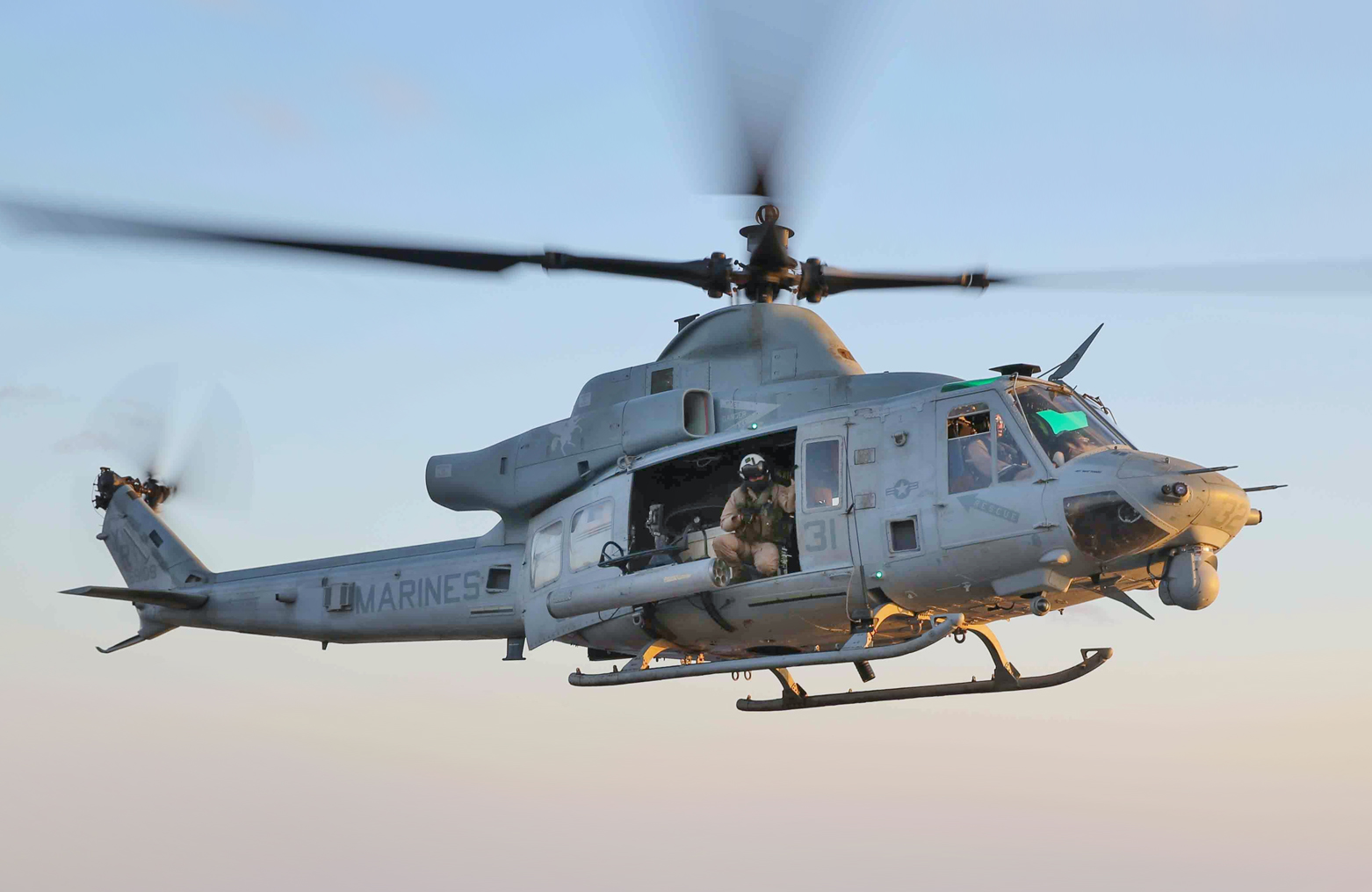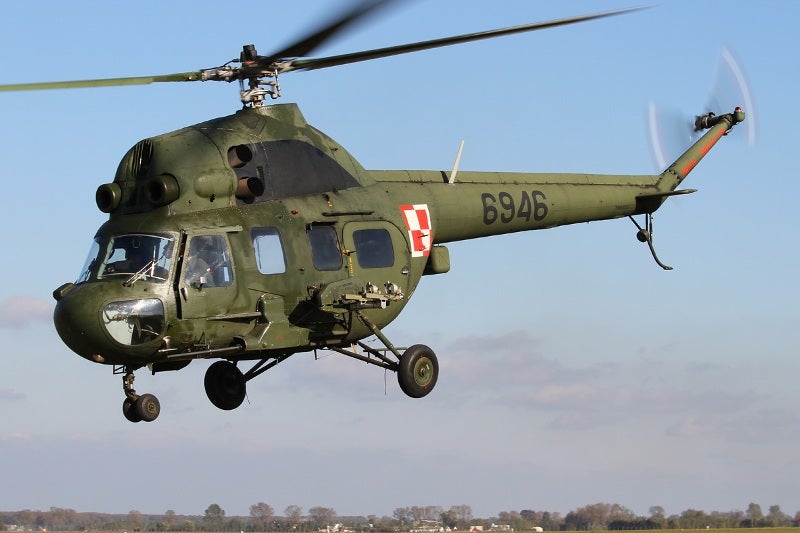In Profile: Poland’s Helicopter Problems
Since the adpotion of the Mi-8 and Mi-17 helicopters, the Polish Armed Forces have suffered from a chronic lack of modern attack and transport helicopters. Although Mi-24s in the Polish service are somewhat more capable, they are lacking in modern electronics and armanent. In the mid 2010s, the Ministry of Defense, under the direction of Tomasz Siemoniak, tried to obtain 50 units of Airbus H-225M.

A contract was awarded to Airbus, however, because of the political change in Poland, the deal was cancelled as the Poles hoped to obtain helicopters from Sikorski, namely the UH-60s, but this did not happen. Not to mention the Leonardo/AugustaWestland AW-101 which performed well during demonstrations in Poland in 2017, but on its way home suffered engine failures. The nature of Poland’s rather unfortunate purchasing politics has led to a situation in which there is no potential source of helicopters for the Polish Armed Forces. Additional Mi-8/17s cannot be obtained from Russia due to geopolitical reasons. Thus, the chances of replacing the old Soviet helicopters are significantly decreased.
Are there any options left on the table for Poland? Well, considering the fact that the Ministry of Defense is currently searching for contractors in three programs, there is a potential chance of obtaining some new equipment.
Those programs are namely:
The Raven: a modern attack helicopter program for Mi-24 replacement,
The Grebe: a small multi-purpose helicopter program for Mi-2 and W-3 Falcon replacement,
The Condor: a marine helicopter program for ORP Ślązak deck operations.
The Raven Program

As previously mentioned, Poland suffers from a lack of a modern attack helicopter platform which would be able to integrate with a modern anti-tank guided missile (ATGM) systems. Spike MR and LR are the most desired missiles as Poland already fields the MR and plans to obtain the long-range variant. If an American company has to win the contract, then there are two primary options. First is the Boeing AH-64 Apache. A platform capable of using laser-guided AGM-114 Hellfire. Second, is the Bell AH-1Z Viper which also integrates the AGM-114. It means that the Poles are either forced to purchase AGM-114s or adapt both of the attack helicopters to use Spike-LR which is still yet to be acquired. Another, quite remarkable difference is the Viper’s capability of launching the AIM-9X Sidewinder, which will also be used by the Polish Air Force with the newest F-35s.
Then the actual design comes into play. Vipers are a decade younger than the Apaches and have been successfully introduced into the United States Marine Corps The differences in cost, however, are not that significant with a AH-64D pricing at $33,000,000 and AH-1Z pricing at $31,000,000 per unit. Then comes the issue of spare parts accessibility. With more than 2,000 AH-64s in service, compared to roughly 200 AH-1Z, Boing has to produce more parts to sustain a sufficient flow of exploitation material, but on the other hand there are a lot of users which makes parts waiting times a potential issue. In this instance Bell would suffer from an inadequate spare-parts production rate due to relatively fewer helicopters being produced in comparison to Boeing.
So, the procurement costs show an advantage to one side maybe? Well, the hourly operational costs of the AH-1Z are estimated at $5,600 in contrast to the AH-64D at $7,000. The AH-1Z, however, may have some advantages in terms of its compatibility with the UH-1Y Venom, as the majority of components between the Bell helicopters are pretty identical. Thus the maintenance, ground crew training and the interchangeability of parts comes to the advantage of the Viper, but only if the Venoms are also implemented into Polish service.
The Grebe Program

The other serious obstacle is Poland’s aging fleet of small-size transport and multi-purpose helicopters. The majority of it consists of severely outdated Mi-2 aircrafts and domestically produced W-3 Falcons.
A Bell proposal, made in 2017, partnered with Polish Armaments Group in a modernization effort designed to suit Polish needs. Yet, the Ministry of Defense left it with no clear answer. The complicated system of public orders in Poland is one of the disadvantages here, but that deserves an article of its own.
The Bell UH-1Y could be introduced alongside the AH-1Z, as previously mentioned, due to the interchangeability of components and similarity of the airframes. It creates problems of its own, however, by subortinating the choice of the Grabe and the Raven to each other. In the case of the Polish Ministry of Defense which typically likes to have a number of options on the table it seems rather a difficult choice.
The UH-1Y, however, is too small to perform some of the roles that are assigned to much larger aircraft such as SAR, CSAR, MEDEVAC and ASW. There is little space for the equipment and additional crew to conduct such actions. This would fail to fill some of Poland’s requirements.
The Real Issue
Besides the Grabe and the Raven program, the real issue is a lack of the propper replacement for the Mi-8/17 platform. Since the H-225M contract collapsed, there have been no real attempts to obtain another platform in exchange. The Ministry of Defense, under Antoni Macierewicz, successfully sabotaged itself in efforts to do so. The struggle to hastly purchase S-70i, infamously dubbed Poor-Hawks due to lack of any specialistic equipment onboard, resulted in 3 helicopters delivered to the Polish police. On the fly, Poland was stripped of a platform which could be diversified into specialized variants in order to conduct operations which were previously mentioned, namely: SAR, CSAR, MEDEVAC and ASW. H-225M was ostensibly ordered to fill the gaps created by years of negligence.

There are no additional funds to solve the helicopter question immediately, as the majority of the spendings is already consumed by various modernization programs within the Polish Armed Forces. Namely the Leopard 2PL, the F-35 purchase and the Vistula A2/AD.
Conclusion
Little remains to be written but a lot to be actually done by the Ministry of Defense. The successful decapitation of a large helicopter purchase program and a diplomatic conflict between Poland and France as a result, created a vacuum for future procurement attempts. The problem of an ageing helicopter fleet will be a huge problem for the Ministry’s as time goes by. Not only in terms of budget and planning but also in terms of procurement. Until the shortcoming is addressed the Polish Armed Forces will lack a key capability which undermines their ability to operate adequately in the face of potential adversaries.
The opinions expressed in this editorial are those of the author and may not necessarily reflect the opinions or views of Overt Defense

